Yuexuan Wang
Learning and Discovering Quantum Properties with Multi-Task Neural Networks
Oct 18, 2023Abstract:Deep neural networks are a powerful tool for predicting properties of quantum states from limited measurement data. Here we develop a network model that can simultaneously predict multiple quantum properties, including not only expectation values of quantum observables, but also general nonlinear functions of the quantum state, like entanglement entropies and many-body topological invariants. Remarkably, we find that a model trained on a given set of properties can also discover new properties outside that set. Multi-purpose training also enables the model to infer global properties of many-body quantum systems from local measurements, to classify symmetry protected topological phases of matter, and to discover unknown boundaries between different phases.
A Data-Driven Approach to Quantum Cross-Platform Verification
Nov 03, 2022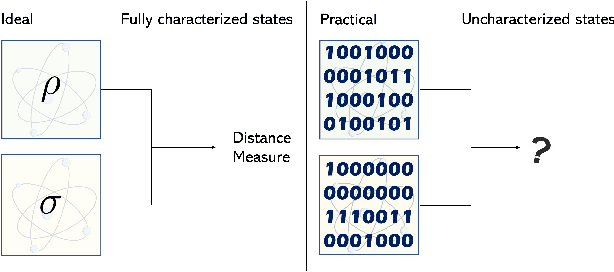
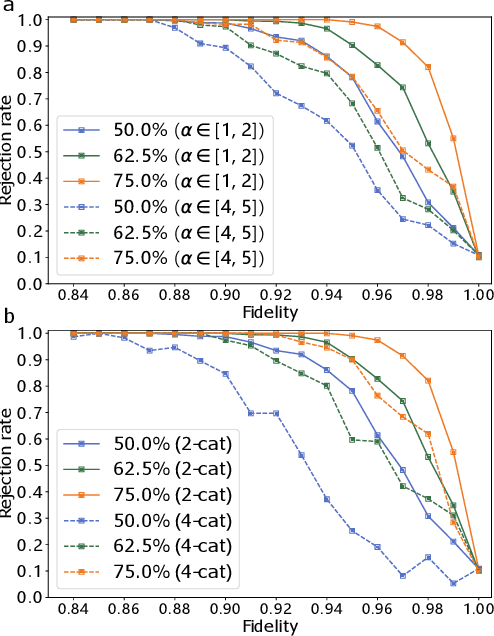
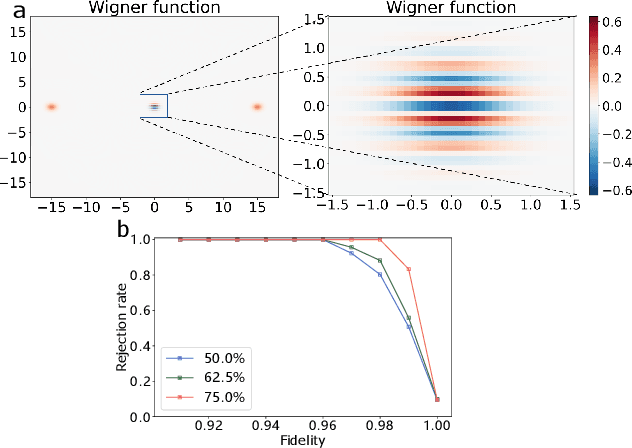
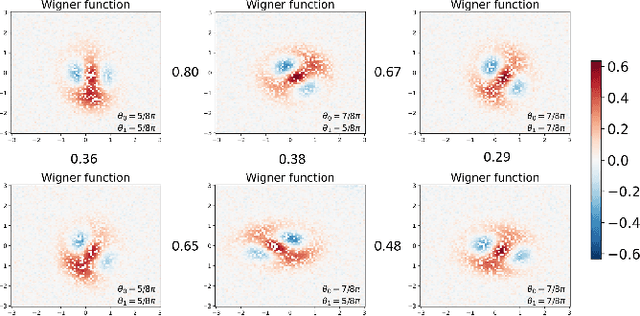
Abstract:The task of testing whether two uncharacterized devices behave in the same way, known as cross-platform verification, is crucial for benchmarking quantum simulators and near-term quantum computers. Cross-platform verification becomes increasingly challenging as the system's dimensionality increases, and has so far remained intractable for continuous variable quantum systems. In this Letter, we develop a data-driven approach, working with limited noisy data and suitable for continuous variable quantum states. Our approach is based on a convolutional neural network that assesses the similarity of quantum states based on a lower-dimensional state representation built from measurement data. The network can be trained offline with classically simulated data, and is demonstrated here on non-Gaussian quantum states for which cross-platform verification could not be achieved with previous techniques. It can also be applied to cross-platform verification of quantum dynamics and to the problem of experimentally testing whether two quantum states are equivalent up to Gaussian unitary transformations.
LSTMSPLIT: Effective SPLIT Learning based LSTM on Sequential Time-Series Data
Mar 08, 2022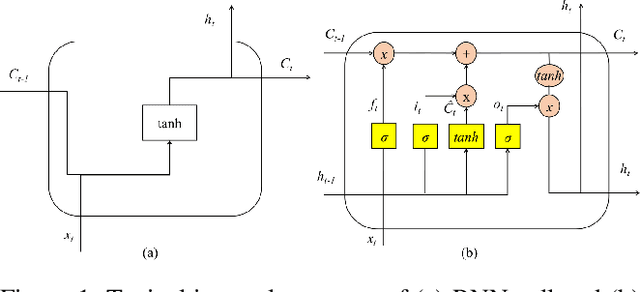
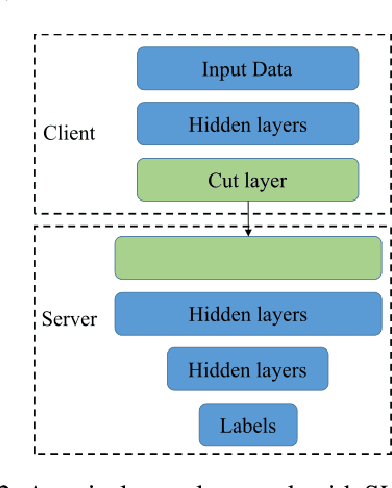

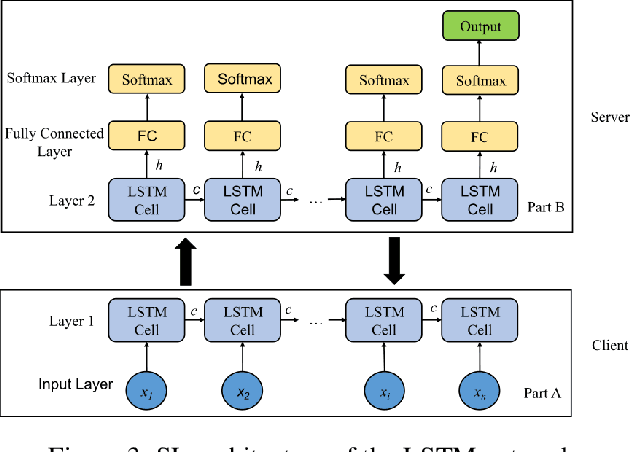
Abstract:Federated learning (FL) and split learning (SL) are the two popular distributed machine learning (ML) approaches that provide some data privacy protection mechanisms. In the time-series classification problem, many researchers typically use 1D convolutional neural networks (1DCNNs) based on the SL approach with a single client to reduce the computational overhead at the client-side while still preserving data privacy. Another method, recurrent neural network (RNN), is utilized on sequentially partitioned data where segments of multiple-segment sequential data are distributed across various clients. However, to the best of our knowledge, it is still not much work done in SL with long short-term memory (LSTM) network, even the LSTM network is practically effective in processing time-series data. In this work, we propose a new approach, LSTMSPLIT, that uses SL architecture with an LSTM network to classify time-series data with multiple clients. The differential privacy (DP) is applied to solve the data privacy leakage. The proposed method, LSTMSPLIT, has achieved better or reasonable accuracy compared to the Split-1DCNN method using the electrocardiogram dataset and the human activity recognition dataset. Furthermore, the proposed method, LSTMSPLIT, can also achieve good accuracy after applying differential privacy to preserve the user privacy of the cut layer of the LSTMSPLIT.
Flexible learning of quantum states with generative query neural networks
Feb 14, 2022
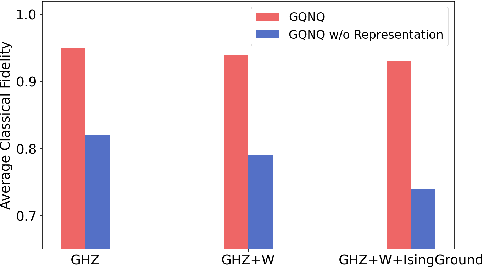


Abstract:Deep neural networks are a powerful tool for characterizing quantum states. In this task, neural networks are typically trained with measurement data gathered from the quantum state to be characterized. But is it possible to train a neural network in a general-purpose way, which makes it applicable to multiple unknown quantum states? Here we show that learning across multiple quantum states and different measurement settings can be achieved by a generative query neural network, a type of neural network originally used in the classical domain for learning 3D scenes from 2D pictures. Our network can be trained offline with classically simulated data, and later be used to characterize unknown quantum states from real experimental data. With little guidance of quantum physics, the network builds its own data-driven representation of quantum states, and then uses it to predict the outcome probabilities of requested quantum measurements on the states of interest. This approach can be applied to state learning scenarios where quantum measurement settings are not informationally complete and predictions must be given in real time, as experimental data become available, as well as to adversarial scenarios where measurement choices and prediction requests are designed to expose learning inaccuracies. The internal representation produced by the network can be used for other tasks beyond state characterization, including clustering of states and prediction of physical properties. The features of our method are illustrated on many-qubit ground states of Ising model and continuous-variable non-Gaussian states.
One model Packs Thousands of Items with Recurrent Conditional Query Learning
Nov 12, 2021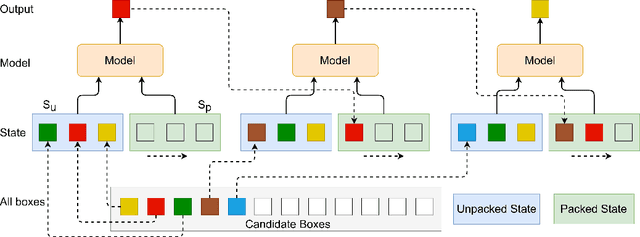

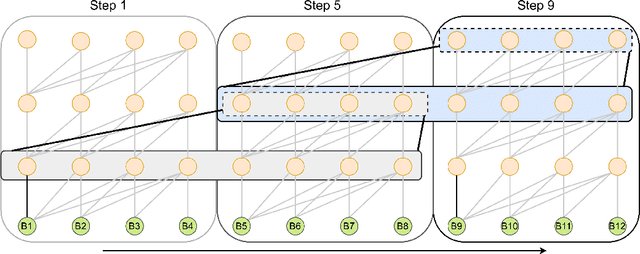
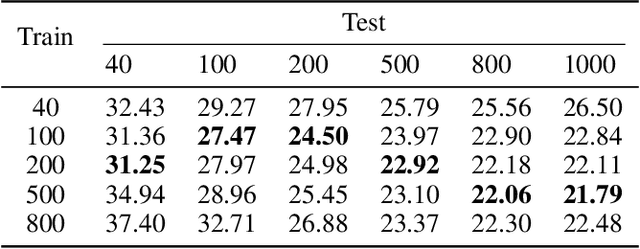
Abstract:Recent studies have revealed that neural combinatorial optimization (NCO) has advantages over conventional algorithms in many combinatorial optimization problems such as routing, but it is less efficient for more complicated optimization tasks such as packing which involves mutually conditioned action spaces. In this paper, we propose a Recurrent Conditional Query Learning (RCQL) method to solve both 2D and 3D packing problems. We first embed states by a recurrent encoder, and then adopt attention with conditional queries from previous actions. The conditional query mechanism fills the information gap between learning steps, which shapes the problem as a Markov decision process. Benefiting from the recurrence, a single RCQL model is capable of handling different sizes of packing problems. Experiment results show that RCQL can effectively learn strong heuristics for offline and online strip packing problems (SPPs), outperforming a wide range of baselines in space utilization ratio. RCQL reduces the average bin gap ratio by 1.83% in offline 2D 40-box cases and 7.84% in 3D cases compared with state-of-the-art methods. Meanwhile, our method also achieves 5.64% higher space utilization ratio for SPPs with 1000 items than the state of the art.
* 16 pages, 5 figures, 3 tables. Accepted to Knowledge-Based Systems, 2022
Edge-competing Pathological Liver Vessel Segmentation with Limited Labels
Aug 01, 2021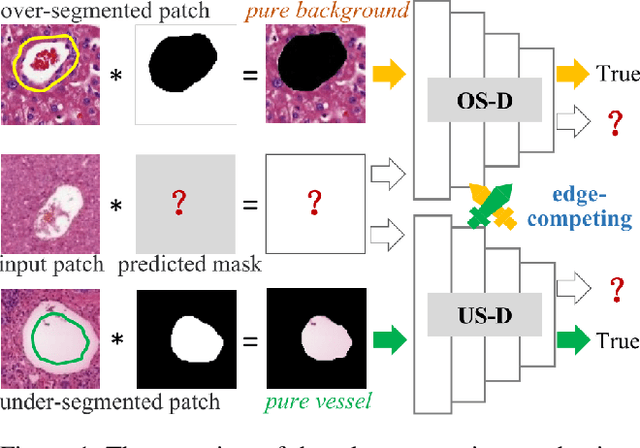



Abstract:The microvascular invasion (MVI) is a major prognostic factor in hepatocellular carcinoma, which is one of the malignant tumors with the highest mortality rate. The diagnosis of MVI needs discovering the vessels that contain hepatocellular carcinoma cells and counting their number in each vessel, which depends heavily on experiences of the doctor, is largely subjective and time-consuming. However, there is no algorithm as yet tailored for the MVI detection from pathological images. This paper collects the first pathological liver image dataset containing 522 whole slide images with labels of vessels, MVI, and hepatocellular carcinoma grades. The first and essential step for the automatic diagnosis of MVI is the accurate segmentation of vessels. The unique characteristics of pathological liver images, such as super-large size, multi-scale vessel, and blurred vessel edges, make the accurate vessel segmentation challenging. Based on the collected dataset, we propose an Edge-competing Vessel Segmentation Network (EVS-Net), which contains a segmentation network and two edge segmentation discriminators. The segmentation network, combined with an edge-aware self-supervision mechanism, is devised to conduct vessel segmentation with limited labeled patches. Meanwhile, two discriminators are introduced to distinguish whether the segmented vessel and background contain residual features in an adversarial manner. In the training stage, two discriminators are devised tocompete for the predicted position of edges. Exhaustive experiments demonstrate that, with only limited labeled patches, EVS-Net achieves a close performance of fully supervised methods, which provides a convenient tool for the pathological liver vessel segmentation. Code is publicly available at https://github.com/zju-vipa/EVS-Net.
 Add to Chrome
Add to Chrome Add to Firefox
Add to Firefox Add to Edge
Add to Edge